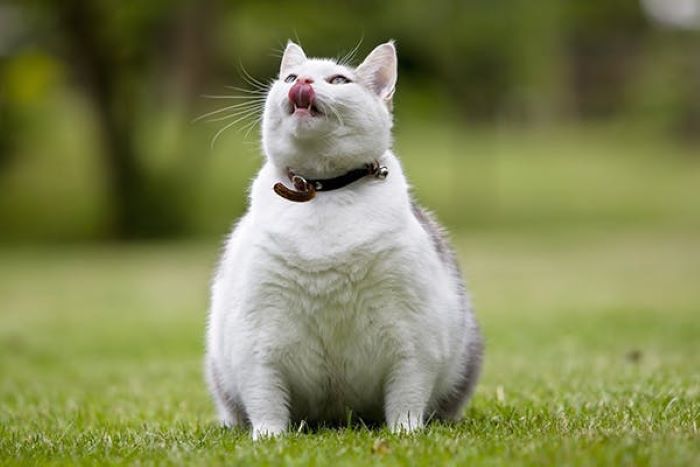The causes of obesity in cats are numerous, but the first and foremost of them is plain, old dietary indiscretion also known as too many table scraps! Realize that when you feed a cat that tiny piece of hot dog, that is equivalent to you eating two to three hot dogs! In other words, it won’t take many of these tiny pieces to make your cat fat. Table scraps do nothing but promote obesity and create an annoying beggar out of your pet.
Feeding table scraps is no doubt the biggest culprit causing obesity in pets, but simply feeding the wrong type of food can do the same. Most pet food manufacturers produce products geared for different stages of a pet’s life.
For instance, on the market today you have growth formulas, high-protein rations, “light” formulas, adult-maintenance formulas, geriatric formulas, and so on. The choices are so numerous that pet owners often become confused as to which type their particular pet should be on, and this could lead to improper feeding practices and obesity.
The only pets that need to be on a growth formula of food are kittens under 1 year of age, pregnant and lactating pets, and, in certain instances, cats that are recovering from or fighting off illness. Because energy requirements drop considerably as a pet matures, feeding high-energy, high-calorie growth formulas to an otherwise healthy cat can inadvertently cause obesity.
The same holds true for geriatric pets over 8 years of age. These pets should be fed “less active” or senior-type diets containing higher fiber and fewer calories instead of the regular adult-maintenance rations.
Failure to adjust dietary requirements to specific individual needs is another predisposing cause of obesity. As far as how much you should be feeding your pet, the first place to start is to consult a breed book or a veterinarian and find out what the ideal weight should be for your pet.
Then look at the recommendations printed on the label of the pet food you are using. Even these printed guidelines should be considered averages, since the needs of each individual will vary, depending on individual metabolic rates, exercise levels, and eating habits.
For kittens, follow the manufacturer’s recommendations as to how much to feed. When your pet is still an adolescent, instilling solid feeding habits is more important than worrying about how much to feed.











